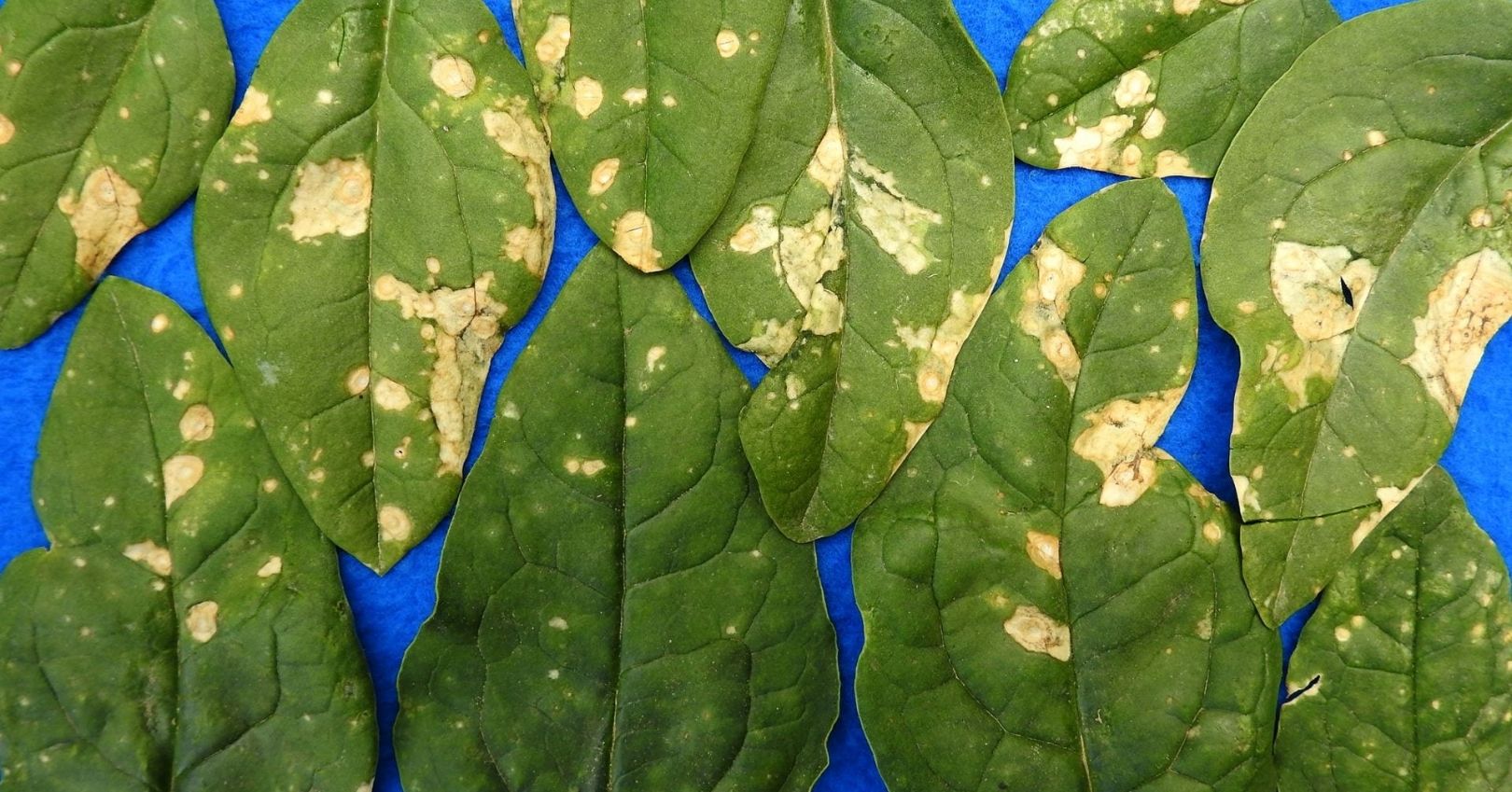Leaf Spots


Casual Agents
Leaf spots are caused by Stemphylium botryosum f. sp. spinacia (spinach) and Cladosporium variabile (spinach and chard).
Symptoms
Stemphylium and Cladosporium are of minor importance in spinach and chard production.
On spinach: Stemphylium causes small spots that are initially gray-green in color. The spots enlarge over time and eventually dry up and become tan and papery in texture. Cladosporium initially causes tiny necrotic, sunken spots on the leaves (the spots could be mistaken for spray damage). Eventually the lesions turn dark brown and the leaf dies.
On chard: Cladosporium on chard causes the same foliar symptoms as on spinach.
Disease Cycle
Stemphylium and Cladosporium on spinach cause most damage between 59oF-68oF and 65oF-74oF, respectively, and high humidity (80%). The spores are splashed from volunteer spinach or plant debris on the soil surface by rain or irrigation onto the leaves of new plants. The spores can also be windborne and, in the case of Stemphylium, seedborne.
Management
There are no effective chemical controls
- Remove crop debris. This minimizes inoculum for crops grown in the following year.

